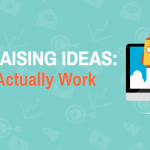How To Get More Online Donations With Content Marketing

Updated June 4, 2019
It’s no secret that content is king when it comes to engaging and delighting donors and members alike.
But did you know that when you create content based on donor intent, you can use it to target people ready to donate online?
In this article, I’m going to show you how to use content marketing to increase online donations.
While the execution isn’t always intuitive, you can attract more visitors to your site with content marketing.
Then, that same content can help to convert them into online donors.
By writing for donor intent, you can position your posts in front of a group of people ready to take an action.
Content marketing gives you an opportunity to have a conversation with your donors.
Why does this matter?
Because minds are changed and hearts are moved by meaningful conversations.
Search engine traffic is the most obvious boon of content marketing.
If your site is optimized for search, and your content answers your donors’ burning questions, you’ll end up with more site traffic.
How do you translate that traffic into donations though?
By tying all of your content marketing back to real organizational goals.
In this case, you’re looking for more online donations.
The opportunity for nonprofits to maximize online donations through content is huge.
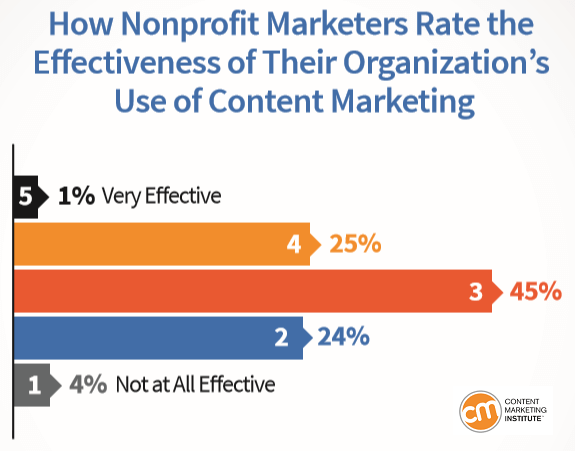
While 76% of nonprofit marketers say their organization uses content, only 26% consider their strategy effective.
What Is Content?
Content is anything you create for your audience:
- Blog posts
- Social media posts
- Ebooks
- Slideshows
- Video
- Podcasts
- And so much more.
Each content type has various levels of impact on your nonprofit’s budget.
The bar to entry is lower for some than others.
You can probably figure out some of the easier ones.
For example, many organizations have social media accounts.
They’re free to create and use in their most basic forms.
Organizations may pay for collateral services like scheduling apps, but the account itself is free.
All content types can work together, and you can approach a single topic through multiple types of content.
We call this content repurposing.
If you write a blog post and your constituents love it, which they show by commenting and sharing it, then why not turn that into an infographic or video?
How do you create content that gets more site visitors and, in turn, more online donations?
By understanding what your donors are looking for when they open up Google.
By using donor intent to create your content marketing strategy you can position your site and cause in front of a group of people ready to take an action.
What Is Donor Intent?
Donor intent is most often expressed in gift restrictions, terms, or agreements between a donor and donee.
However, it may also be expressed separately in the words, actions, beliefs, and giving practices of a philanthropist.
Below a list of the most popular definitions for donor intent.
Wikipedia
In philanthropy, donor intent is the purpose, sometimes publicly expressed, for which a philanthropist intends a charitable gift or bequest.

University of Iowa
The donor intent of the gift establishes the guidelines for how they want their donation to be used.
Some gifts are for a very specific purpose and others are more general.
Philanthropy Roundtable
Donor intent ensures that the assets they dedicate to charity are disbursed as they intend.
Why Donor Intent Matters For Online Donations
With donor intent, the decision to give has already been made.
Phrases like, “how can I donate my car”, or “where can I donate my car”, tells you the searcher is ready to make a donation online.
Informative keywords like, “best charity to donate a car” or “what can I do with my old car,” implies the searcher is in the process of a decision, but isn’t ready to take an action.
Yes, ranking on the top page for the phrase, “best car,” might drive 5,000 visitors to your site.

But it can be difficult to convert that traffic into online donations.
This idea extends to other broad phrases like, “10 best charities,” or “10 biggest nonprofits.”
That leaves you with donor intent keywords.
Consider this:
If someone is looking to support children in need by donating their car, then Wheels For Wishes might be a perfect match.
But what if this donor doesn’t know Wheels For Wishes exists?
What would their online searches look like?
- “Donate my car”
- “How to donate a car”
- “Where can I donate my car?”
- “Donate my car to charity”
These donor intent keywords suggest the searcher is ready to donate.
In this case, Wheels For Wishes would want their site to appear on the first page of search results for these terms.
But you’re probably wondering:
“How do I identify these key phrases for my organization?”
Let’s take the phrase, “how to donate a car,” as an example.
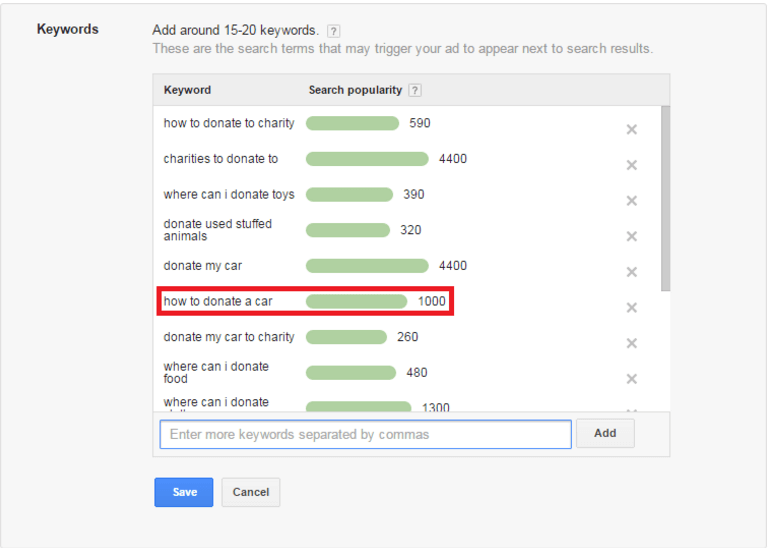
According to Google Adwords, “how to donate a car” shows an estimated 1,000 monthly search results.
The whole goal of targeting donor intent keywords isn’t the quantity of search, but rather quality.
Think about it this way:
Would you rather have 100,000 site visitors who will probably never donate.
Or, 10,000 visitors who are highly engaged and willing to donate online right now?
Of course, when it comes to identifying keyword quality, there are a few things you should look for:
- A monthly search volume of at least 100
- View who advertises for the phrase (especially competition)
- Analyze the average cost per click (CPC) for the keyword/phrase
One of the most interesting things about the phrase, “how to donate a car,” is that there are 7 websites advertising for it on Google.
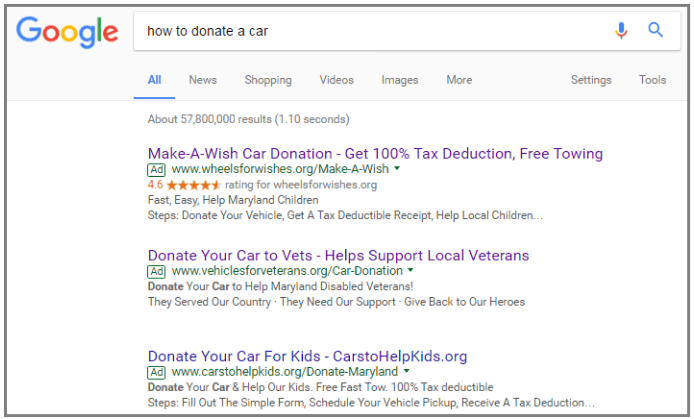
When we dig into the keyword phrase a little deeper, we can see the cost per click (CPC) is $30.87.

But why are nonprofits willing to spend so much money on advertising?
Well, one online donation could be worth thousands of dollars on average.
Thus, you can justify spending $500-$1,000 per month on paid advertising when the marketing ROI is high.
The Google Ads grant is also a popular program that provides 501c3 certified nonprofits with a monthly $10,000 spend to invest in PPC campaigns.
There are a plenty of free tools available to analyze keywords and phrases, but my personal favorite is Keywords Everywhere.
Their chrome extension is built into the Google search bar and provides real-time data on keywords:
- Average monthly search volume
- Cost Per Click
- Level of Advertising Competition
You can also plug in and track keywords using the bulk upload feature.

Pro Tip: Look for a keyword that has a high CPC, but low competition.
The high CPC implies a potential return on investment (donor intent), while the lower competition means it’s not as well known of a searched term.
Thus, you may have an easier time ranking content in search results.
>How does this lead to more online donations though?
That’s what we’ll explore by taking a look at each of the major types of content.
First Stop: Your Website Content and Blogging
It’s generally a given these days that you need a website for your nonprofit.
But why should you consider a professionally designed website versus one you can put together yourself?
You want a website that is set up to encourage online donations.
This means ensuring it’s optimized for search engines and a stellar donor experience.
Professionally designed doesn’t have to mean spending $50,000.
But it does mean finding someone with the knowledge and skills you need for success.
Having a blog is one of the easiest content channels to develop when you’re beginning to execute a content marketing strategy.
Why blogging?
It’s one of the easiest ways to keep your audience informed about your organization’s priorities and activities.
Blogging also blends easily with other types of content, and blog posts are really easy to distribute.
As we mentioned before, your first step to a great blog post (or any content) is determining a specific keyword.
Get More Donations Online With Storytelling
You can use your blog create a narrative around your nonprofit’s efforts and accomplishments.
Humans love stories, and a blog is a great place to tell your nonprofit’s.
The Charity: Water stories collection is a great example of how you can use blogging to increase online donations.
In one story, Charity: Water shares the tale of a 15-year old female water committee president.
A female water committee president that young was previously unheard of.
But as Charity: Water tells her story, it becomes obvious that this is no ordinary young woman.
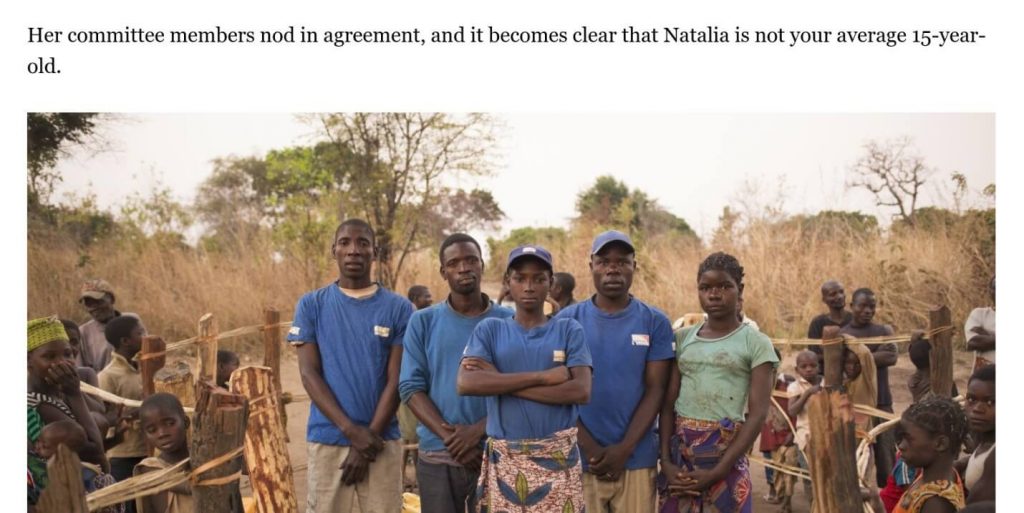
As the tale unfolds, you’re rooting for her, her village, and every girl in a rural community who has to pump water.
You’re led to the conclusion that having a borehole in their village was pivotal to this girl’s future.
And that this pivotal change was instigated by Charity: Water’s efforts. Efforts made possible through your donations.
And we’ve arrived to the end goal of this post.
Do you support young girls having the time to go to school?
Then why wouldn’t you donate now, by clicking this conveniently placed link?
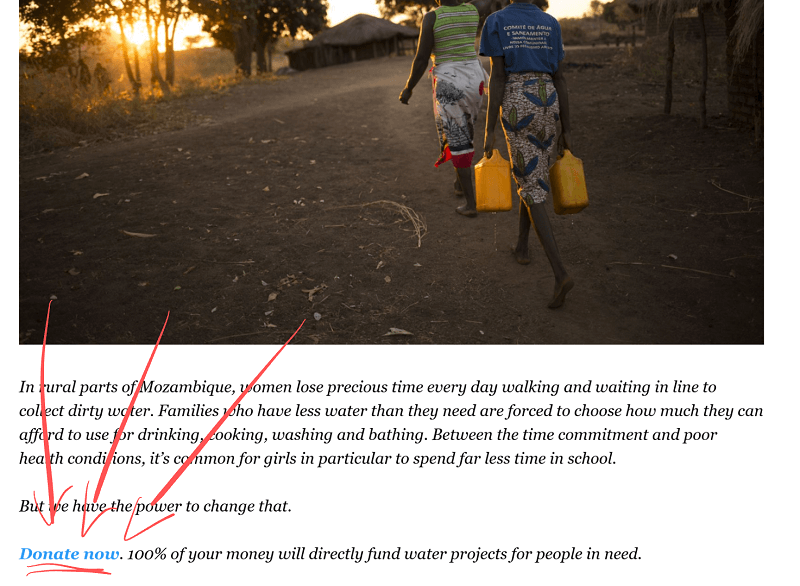
Visual Content Allows You To Control The Emotional Experience
Your visual content can elevate your website.
How? Because a picture isn’t just worth 1,000 words.
A picture can add emotional depth that words just can’t reach for many people.
Images ignite the imagination, and they set the stage for storytelling.
Take this picture from St. Jude’s Hospital’s Website:

Their entire website has pictures and videos of kids with their families.
Why?
Because most parents can’t imagine what having a child with cancer is like.
The images and videos help their imagination create that story.
If it was your child, wouldn’t you want someone to donate?
You’ll notice that in the photo above, we’re close enough to clearly see the child’s face, and the emotion he’s feeling.
Many nonprofit websites will have photos focusing closely on their subjects.
This is because in order to evoke emotions strong enough for donation, you need to provide the spark.
So, St. Jude’s focuses on their patients and their families.
The SPCA focuses on the faces of the many animals that come through their shelters.
In the case of Ocean Free Conservancy, they use imagery that causes feelings of disgust (quite effectively I’d like to add).
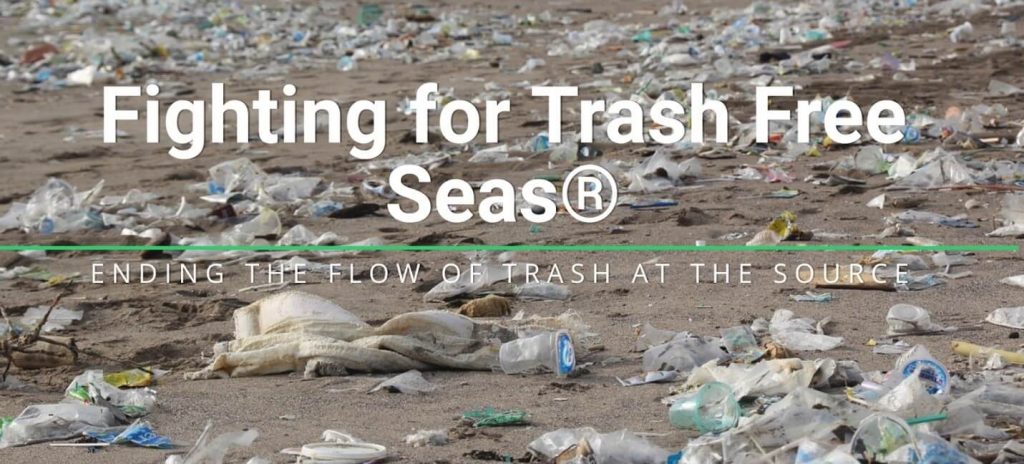
Your site’s images can cause your site visitors to feel emotionally invested.
Your images can turn that into donations that are emotionally motivated.
What About Infographics? Yes, You Should Use Them
Okay, so you understand how images can increase online donations, but how can infographics help your cause?
Infographics and numbers are a match made in heaven.
Storytelling through writing, photos, and videos gets the attention of the reptilian brain, but the newer areas of the brain need to be satisfied as well.
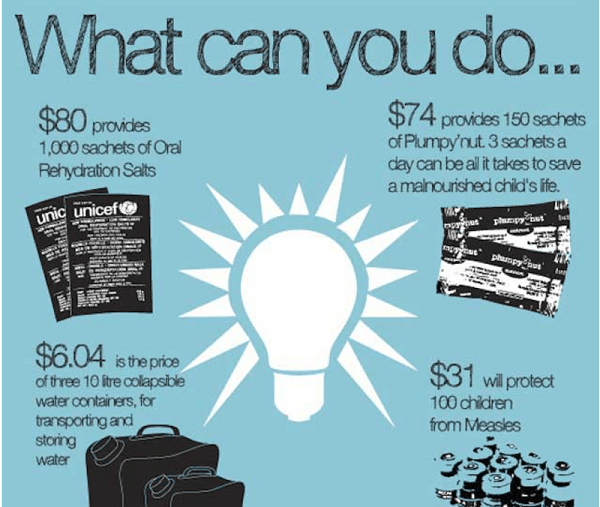
Infographics allow you to present complex processes and data in an easy to consume visual bites.
This is great for your quarterly and annual reports.
Want to show your constituents the results of a project?
You can pair a great storytelling blog with an infographic that shows how their donations impacted the end result.
Not only will they get the satisfaction of seeing how their dollars were used, they can feel more comfortable donating in the future.
If you’re running a campaign, then maybe you should consider adding a small infographic to your donation page to help your potential donors visualize the impact of their donation.
Click & Pledge illustrates this very well in the graphic below:
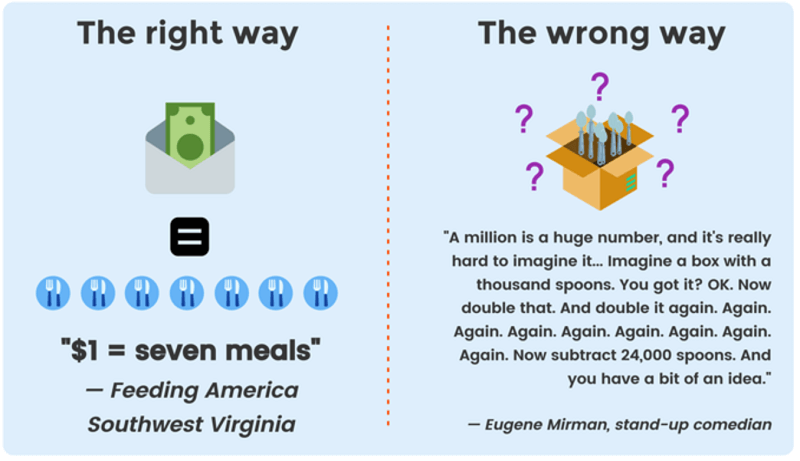
Consumers Love Video, Which Means Donors Love Video
68% of consumers prefer to learn through short videos.
Video production costs have gone down thanks to tech innovation, and the potential for repurposing video content is astounding.
If you make a video for your blog, you can use it for video ads meant to generate donation.
You can also splice up one video into many segments for use on your social media channels.
Related Article: 6 Powerful Types of Video Content Every Nonprofit Needs
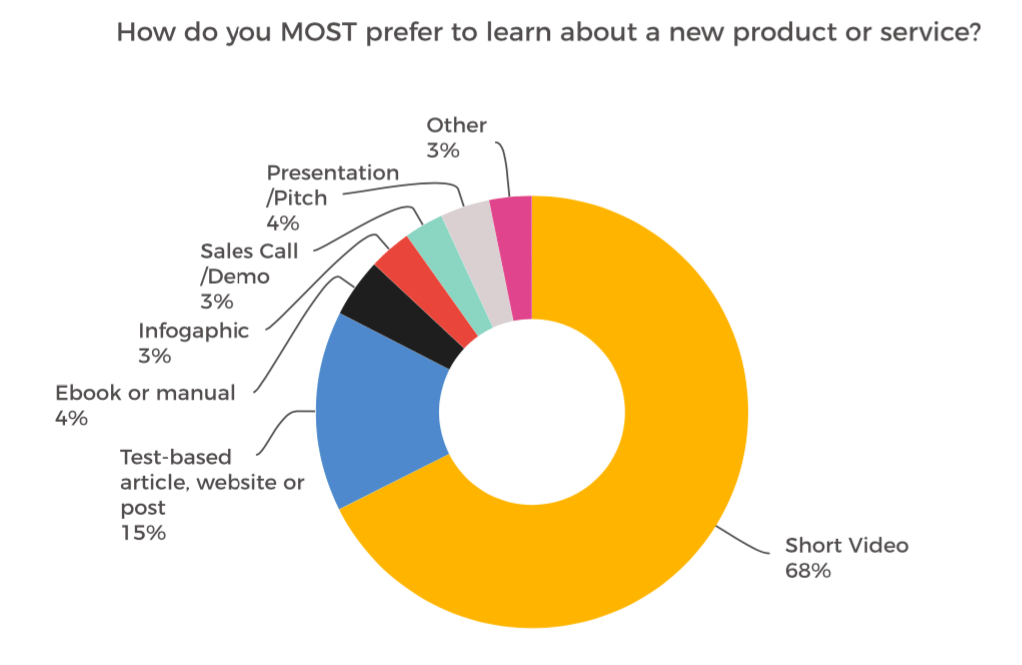
57% of people who watch a nonprofit video, make a donation.
How’s that for ROI?
So how do you turn this rapt audience into online donors?
By focusing on your nonprofit’s stories.
Video is by far the most expensive type of content to produce.
Or at least it used to be.
Well, yes, if you want to make a movie theater worthy production, you’re going to need a large budget.
But mobile phone cameras have gotten pretty good.
And there’s lots of video editing software to choose from online.
What should you make videos about?
- Explain your organization’s cause and motivations
- Show the need behind a certain fundraising campaign
- Capture success stories on video
- Feature big donors or awesome team members
Don’t be afraid to get creative here.
The worst content affliction is being like everyone else.
Ebooks, Case Studies, and Other Downloadable Content
Downloadable content goes by many names:
- Lead magnet
- Downloadable freebie
- Gated content
- Content upgrade
You can use downloadable content to generate sign ups for your email list (we’ll explain why that’s important in the next section).
A B2B marketer noted how he increased signups by over 350% just from implementing content upgrades on his site.
And he’s not alone.
But what does this mean for you as a nonprofit?
Well, if you want to grow your email list (and you do), then you need to give people a reason to give you their contact information.
What sort of content can your nonprofit provide?
Let’s take a look:
- How-to ebooks, like “How to Start an ‘X’ Program in My Community”
- Whitepapers, if your nonprofit is centered around charity through tech
- Checklists, if your organization helps others run community projects
- Case studies, which can be success stories for past projects
- If you have corporate partners (or want some), DFY, or done-for-you, slides can be a great download for that target constituent
Don’t be afraid to take a look at some of your favorite for-profit organizations and see what they’re doing.
You can garner a lot of attention by being unique in your approach.
Content Distribution Channels
These channels are also great for original content, but your nonprofit content (videos, infographics, blog posts, and downloadable content) should be distributed through these channels as well.
Personalize Your Email Marketing For More Online Donations
Your email list is a very valuable asset.
It’s one, like your website, that is all yours.
Social media algorithms can go from favorable to unfavorable overnight. But email is more basic than that.
Email service providers aren’t trying to figure out if your recipients want to hear from you.
They signed up, so it’s a given.
They do try to figure out how much your recipients want to hear from you though.
So sending compelling emails is vital.
Thanks to email marketing technology, you can personalize the emails you send, and the groups who receive them, based on your list’s activity.
Email personalization increases the chances your recipients will open your emails.
>Personalization allows you to establish a track record of sending highly relevant emails.
You can send emails to:
- People who’ve downloaded a checklist
- Constituents who’ve donated in the last six months
- Constituents who HAVEN’T donated in the last year
- Attendees at past events
- And the list goes on for ways you can increase donations
You always want to make a point to send any new content you create, videos, blog posts, ebooks, etc. to your current list.
If they weren’t interested in what your organization had to say, they wouldn’t have signed up.
You just have to fulfill your side of the bargain, and keep your emails interesting.
Focus Your Social Media Efforts to Produce Donor Actions
So you can share a lot of different things on social media, but we’re going to focus specifically on how you can distribute new content.
First thing’s first, don’t just use your social media to link dump.
You’ve seen it.
It’s when someone pops in, pastes their latest blog post in a new social media post, and pops back out.
We call that link dumping.
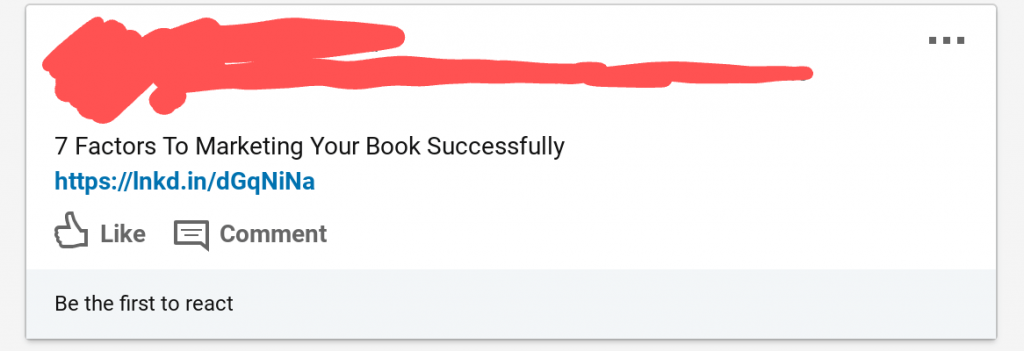
Besides not adding value in the actual post, you limit the number of times you can share this new content without being spammy.
Hint: that number is exactly 1.
Instead, pull out interesting quotes, statistics, and concepts from your content.
Create images in an app like Canva.
Now you’ve got multiple posts that you can use to drive traffic to the same page on your site.
If you use a scheduling app like Hootsuite or Buffer, you can schedule all of these posts at once.
Then you save yourself and your team the hassle of remember to promote this blog post later.
You can even fundraise and campaign for donations through social media.
Facebook probably has the most advanced tools for this.
For example, if your nonprofit is in an eligible location, your advocates can use their birthdays for fundraisers:
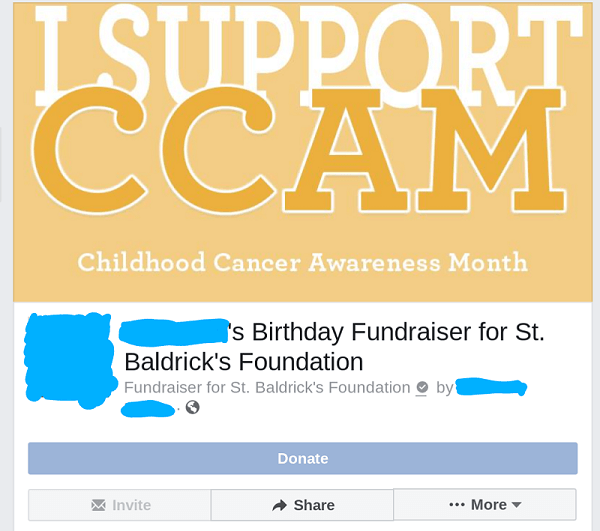
Don’t Get Carried Away – Tie Your Social Media to Goals
Don’t feel like you have to be on every social media platform out there.
It’s better to be on a few and do that well, than to perform in a mediocre fashion on many.
If you know your ideal donors spend the most time on Facebook and Instagram, then focus your efforts there.
At least to start.
If your donors love Instagram, then could Pinterest be a new channel for site traffic and, in turn, donations?
These are questions you have to ask as you explore what your target audience truly wants from your content.
To make sure you stay on track, assign goals to each social media post.
At a minimum, before publishing, ask yourself (or your team) “Why are we posting this?
Have we made it clear what we want our audience to DO?”
Conclusion
So to recap, you can get more online donations with content marketing if you:
- Target donor intent keywords in your content and marketing material
- Create a content marketing strategy based on donor intent keywords
- Create different types of content with the goal of encouraging people to donate online
- Promote your content through personalized email marketing and your target donors favorite social media platforms
Related Articles
- 5 Tips For Steering Your Organization Toward Online Fundraising
- 15 Online Fundraising Ideas And Strategies (That Will Get Results)
- Digital Marketing Plan For Nonprofits: The Definitive Guide (2018)
- SEO For Nonprofits: A Beginners Guide To Digital Marketing Success
- Digital Marketing Made Easy: What To Do When You Have No Clue



